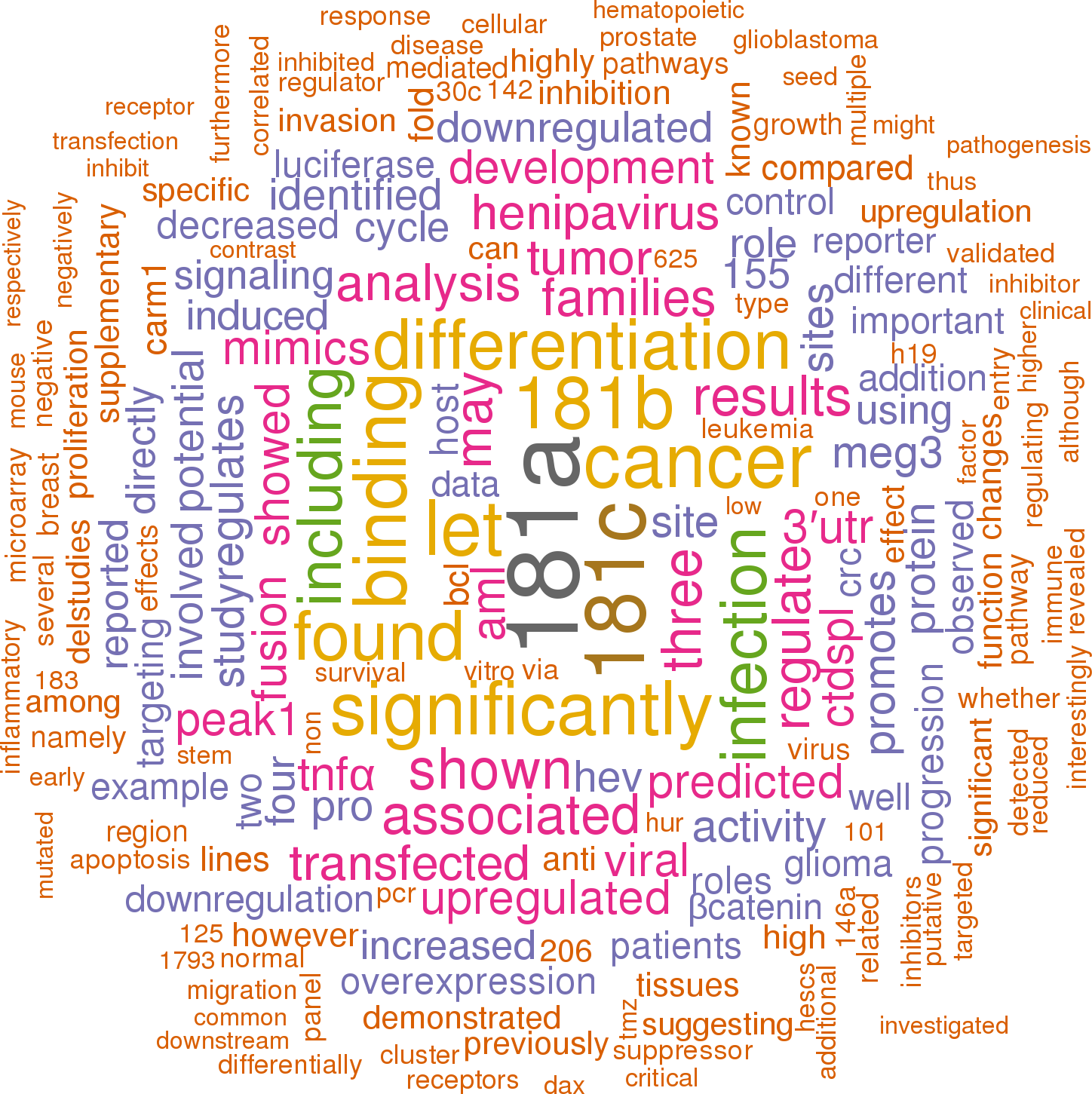Accession
MI0003139
Symbol
HGNC:
MIR181D
Description
Homo sapiens
hsa-mir-181d precursor miRNA
Summary
Caution, this is an AI generated summary based on literature. This may have errors. ?
MIR181D is a microRNA implicated in various biological processes and diseases [PMC9396029]. It is located upstream of its precursor transcription start sites and has been associated with systemic lupus erythematosus susceptibility in a Chinese population [PMC9396029]. The microRNA has been shown to play a role in tumor suppression by downregulating MALT1, which inhibits tumor cell growth [PMC6125328]. However, there is no compensatory up-regulation of MIR181D observed in miR-181a/b-1 knockout thymocytes, indicating its unique regulatory functions [PMC4682956]. MIR181D also influences T helper cells by modulating the activity of the enzyme SOAT2, which is involved in cholesterol metabolism [PMC7460638]. Additionally, it can act as a transcriptional regulator by binding to DNA promoters [PMC9967498]. In the context of chronic obstructive pulmonary disease (COPD), MIR181D expression is downregulated in lung tissue, suggesting its involvement in the disease's gene regulation mechanisms [PMC6089098]. Moreover, it interacts with various biological molecules such as pseudogenes and other miRNAs as revealed by next-generation sequencing and bioinformatic analyses of COPD bronchial epithelial cells [PMC9730017].
Literature search

240 open access papers mention hsa-mir-181d
(867 sentences)
(867 sentences)
Sequence
46085
reads,
147
reads per million, 117 experiments
guccccuccccuaggccacagccgaggucacaaucAACAUUCAUUGUUGUCGGUGGGUugugaggacugaggccagacCCACCGGGGGAUGAAUGUCACuguggcugggccagacacggcuuaaggggaauggggac
(((((((((((((((((...(((..(((((((....(((((((((....((((((((((.((.(........)))))))))))))..)))))))))...))))))).))).......))))).))))))..))))))
(((((((((((((((((...(((..(((((((....(((((((((....((((((((((.((.(........)))))))))))))..)))))))))...))))))).))).......))))).))))))..))))))
Structure
-- - ----aca ga aucA GUUG g a gac
gucccc uccccu aggcc gcc ggucaca ACAUUCAUU UCGGUGGGUu ug g u
|||||| |||||| ||||| ||| ||||||| ||||||||| |||||||||| || |
cagggg agggga uucgg cgg ucggugu UGUAAGUAG GGCCACCcag ac c g
ua a cacagac -g -CAC --GG - - gga
Annotation confidence
High
Do you think this miRNA is real?
Comments
The mature sequence shown here represents the most commonly cloned form from large-scale cloning studies [2].
Genome context
chr19: 13874875-13875011 [+]
Clustered miRNAs
1 other miRNA is < 10 kb from hsa-mir-181d
| Name | Accession | Chromosome | Start | End | Strand | Confidence |
|---|
Disease association
hsa-mir-181d is associated with one or more human diseases in the Human microRNA Disease Database
| Disease | Description | Category | PubMed ID |
|---|
Mature hsa-miR-181d-5p
| Accession | MIMAT0002821 |
| Description | Homo sapiens hsa-miR-181d-5p mature miRNA |
| Sequence | 36 - AACAUUCAUUGUUGUCGGUGGGU - 58 |
| Evidence |
experimental
array-cloned [1], cloned [2], Illumina [3] |
| Database links |



|
| Predicted targets |


|
Mature hsa-miR-181d-3p
| Accession | MIMAT0026608 |
| Description | Homo sapiens hsa-miR-181d-3p mature miRNA |
| Sequence | 79 - CCACCGGGGGAUGAAUGUCAC - 99 |
| Evidence |
experimental
Illumina [3] |
| Database links |



|
| Predicted targets |


|
References
|



